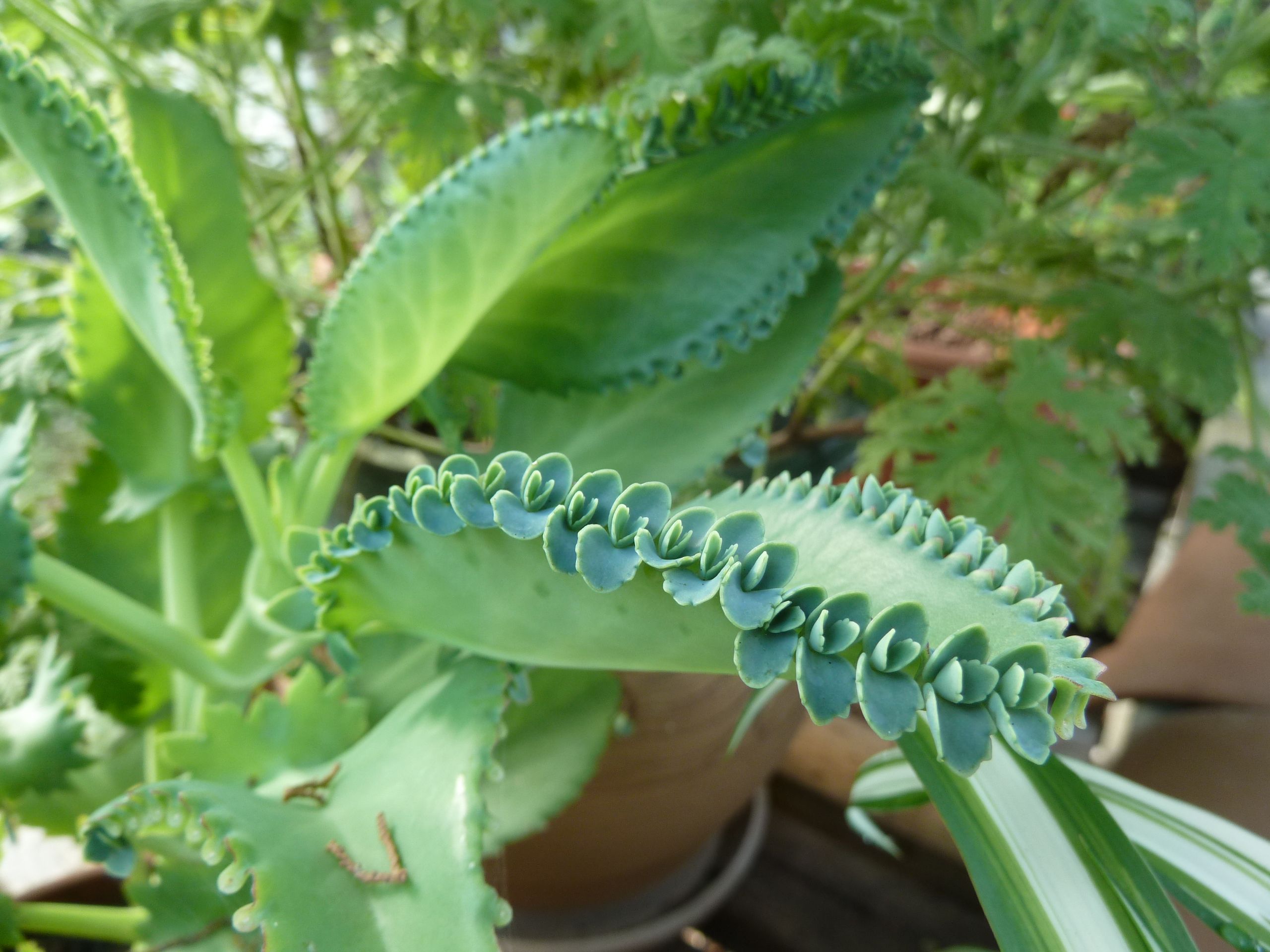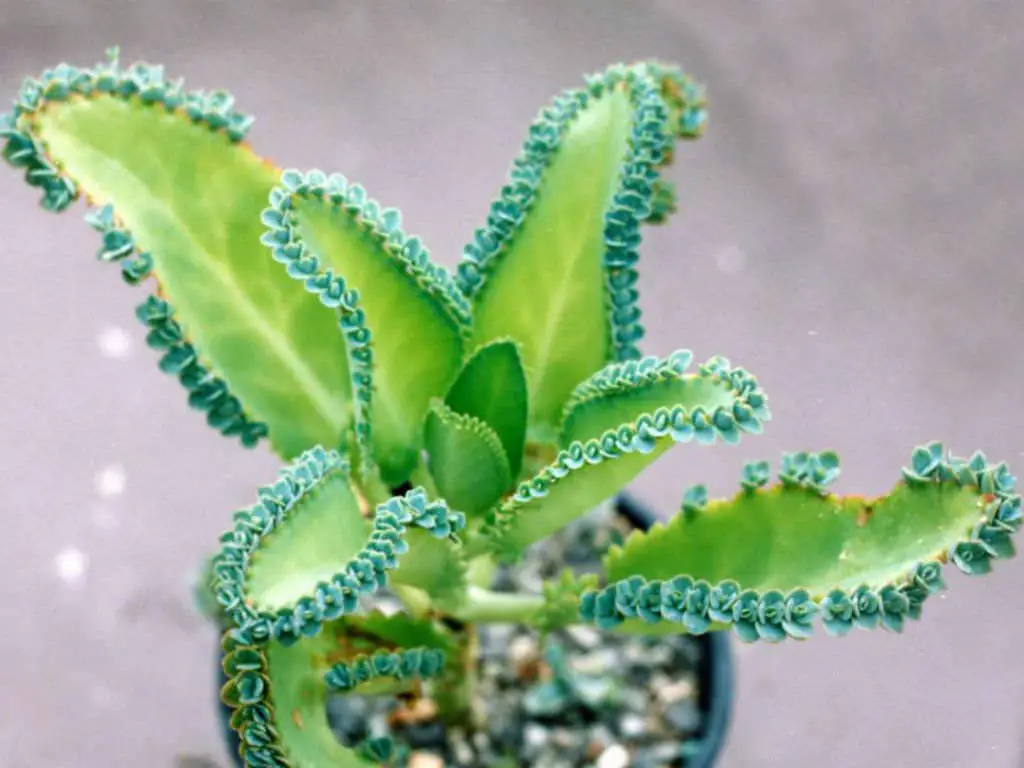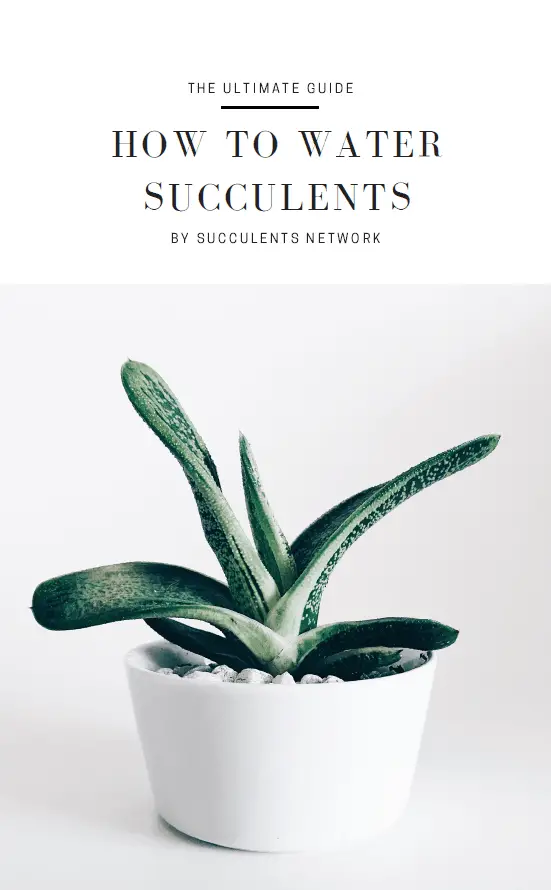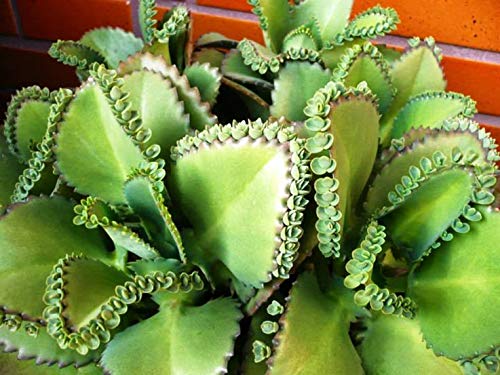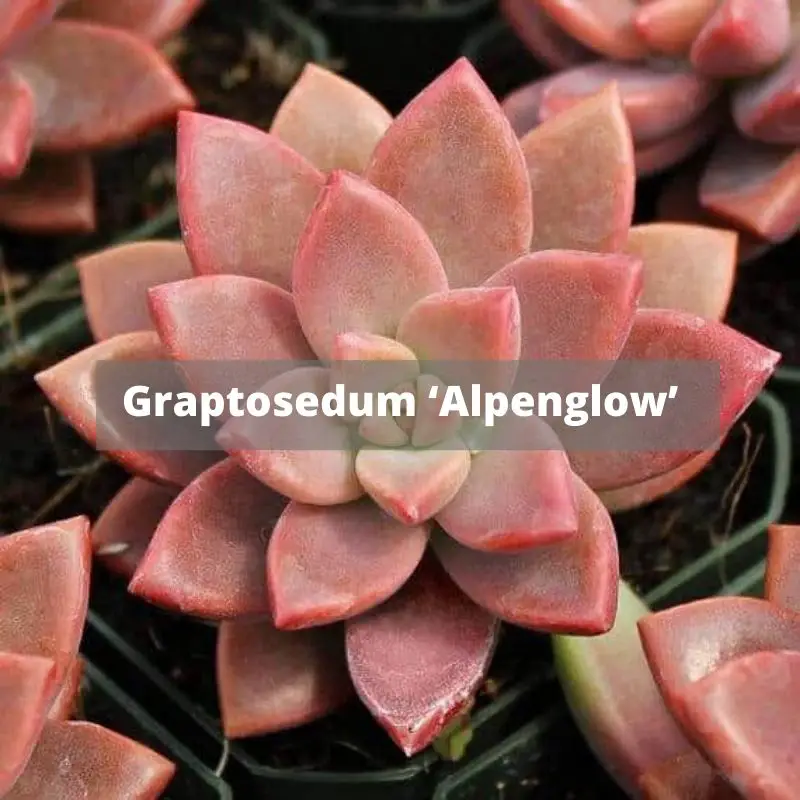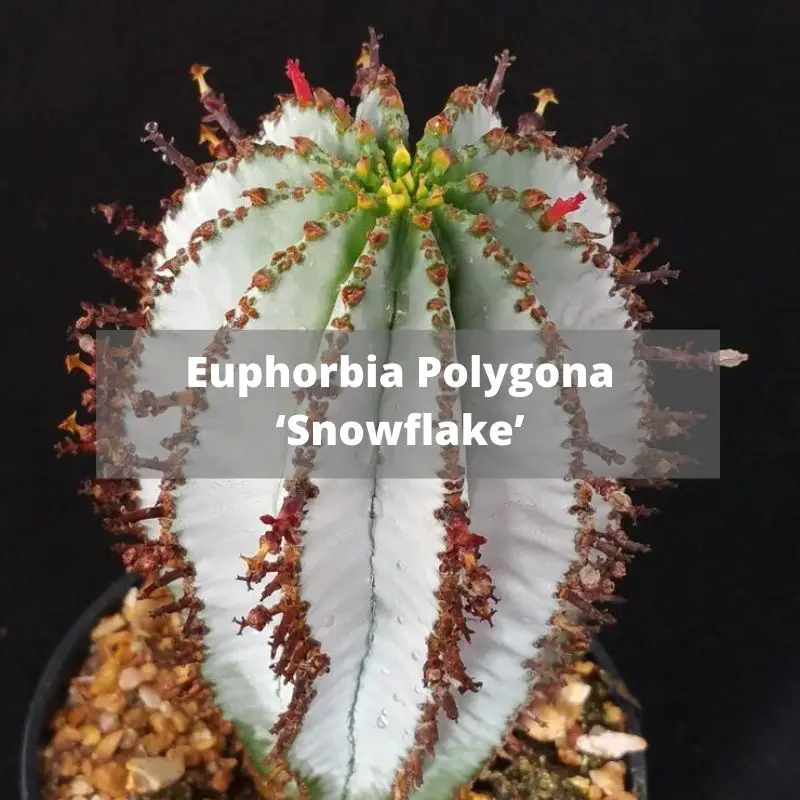The two plants mother of millions and the Mother of thousands do bring confusion due to their similitude. The only thing that brings differences between them is the shapes of their leaves. Mother of thousands has their wide broader leaves growing in pairs, and plantlets appearing in the leaves edges. mother of millions possesses a narrow leave, and the plantlets materializing at the leaves tips.
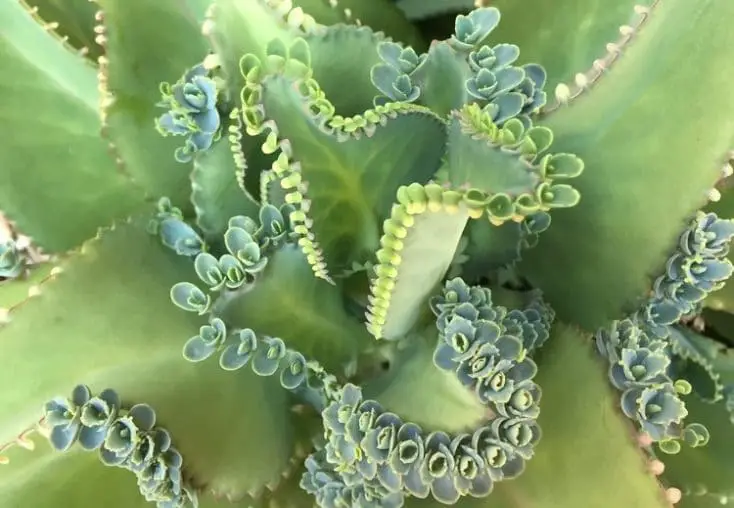
Picture via smartgardenguide
Kalanchoe daigremontiana (mother of thousands)
Being natives to Madagascar, they are also called Myriophyllum daigremontianum (often called the mother of thousands, Mexican Hat, or Alligator plant). The Mother of thousands does have an attractive and rare look. The look has green leaves that are large and do shape baby plantlets on the edges. The plantlets can bring difficulty in getting rid of them because of their rapid growth. Anywhere they land on, they can grow. They are known to be a nuisance and an invasive weed in areas they grow. They are also known to be hardy and do tolerate a lot of heat after establishment.
Kalanchoe delagoensis
Mother of millions is also known as Myriophyllum delagoensis, they are fast-growing plants and are known for their easy multiplication anywhere they grow. This gives them the warranted name mother of millions.’ Little plantlets are produced by each mature plant. The plantlets grow relentlessly, and that’s anywhere they can land on. The plant can be pulled out, but the seeds do survive for many years. The plants are drought tolerant and can adapt to various environmental conditions. They are also considered to be weeds or even invasive species in the world. These attractive plants do have amazing qualities and are easily taken care of and do multiply effortlessly.
How To Care For Mother Of Millions And Mother Of Thousands
The two plants are natives to Madagascar, and their treatment should be no different. Telling by their names, the plants easily grow and do not require a lot of care. They can survive in different conditions like mild frost and drought. They have simple watering needs. They do adapt to conditions like the humid and dry conditions. Mother of millions and mother of thousands can rapidly and easily multiply by themselves with no help. The leaf edges do form small clumps of the flower, that is how they normally multiply. The small flowers are small baby plantlets or plants. The baby plants part ways with their mothers and grows as a new plant.
The ideas of multiplying the plant are good, but imagine the plants taking over the neighborhood. The plants do spread through the seeds and plantlets. Getting lid of the plant requires one to uproot the plantlets. The seeds do remain usable on soil for years, thus why they are considered as invasive species. How one can contain a mother of thousands is a better idea than helping them thrive and grow. It is prudent for you to learn more about these plant species so that you can be able to contain them.
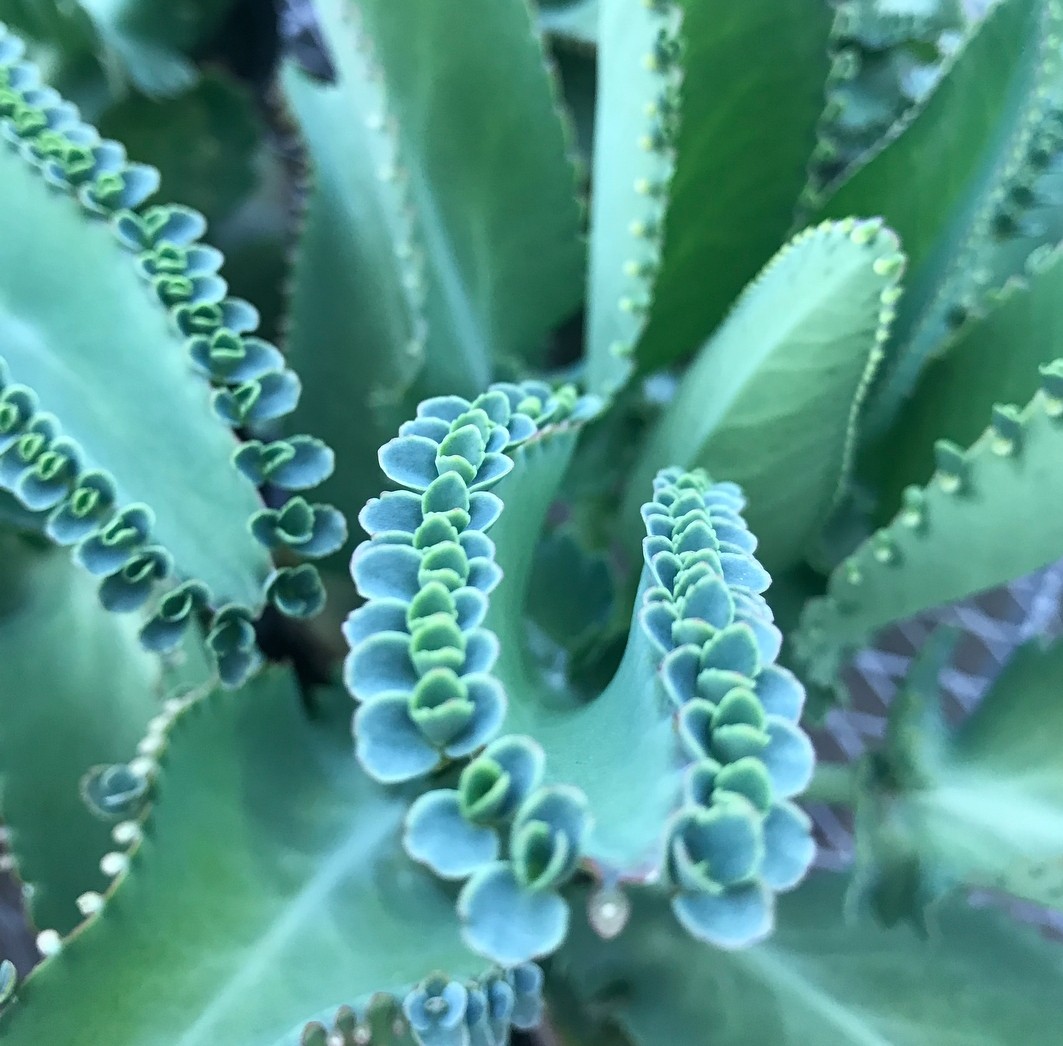
Picture via Reddit
Mother Of Millions Toxicity
ASPCA and pet poison careline have considered kalanchoes toxic to the pets since they have cardiac toxins. It generally has a mild amount of toxicity that is sometimes severe or moderate. Gastrointestinal irritation is a common symptom when dogs and cats ingest. There would be more risks of worse symptoms if large amounts were ingested. Some of the symptoms of their toxic substances are changes in the heart rate affecting the rhythm. It is important to note that it is dangerous to leave the mother of millions plant near your pets.
Are your succulents dying? Do you need urgent help to keep them alive? Don’t worry! This ebook will solve the problems. I shared all my secrets related to how to water succulents with you.
The Shape In Their Leaves Is The Biggest Difference
Mother of Thousands does have a tear-shaped and broad leave. Something noticeable about them is that they grow in pairs. The leaves grow on the stems opposed sides. The upcoming pair does rotate at a 90-degree angle allowing new leaves to receive sunlight.
They are little ridges at the leaf edges. The baby plantlets are formed here. The buds or plantlets grow at the leaf edges. A healthy leaf can come with a full supplement of babies in the edges. The Mother of millions in different circumstances does have a narrow leaf. It consists of 4 leaves, all growing in the same position along the stem known as nodes. There is no alternation like what the Mother of thousand does. The leaves end have plantlets at the tip. Each leaf normally has 2-4 babies.
The Mother of millions is known to be a dangerous weed, especially in Africa and Australia. This is because of their rapid spreading and growth, even in adverse conditions. Behavior in their growth is the final difference between the two mothers. Mother of Thousands has a single, central stalk growing towards sunlight. The heavyweight of the leaves will make the leaves fall over, and growth continues. Stalks rising on the identical plant are often in the Mother of millions. Busk-like reinforcement is formed due to its primary growth.
The genus makes them have a close relationship. Having Madagascar originality, are both treated as other succulents thanks to water, sun, and soil. They can thrive where sunlight is direct and bright. They are also
doing well when it comes to indirect light. The two mothers do appreciate similar water scheduling succulent’s do (Heavy watering, infrequent). The soil should be loose and be fast-draining soil.
With these preferences, the plants do seem to survive on neglect. On the sidewalk cracks of Charleston, South Carolina, they are spotted well. After falling, of course, from their mothers, they start growing again by developing roots. They have survived from places perpetually wet and a stunt unheard of comparing other succulent realms. The Mother of thousands and the Mother of millions have been considered to be weeds.
The mother of millions have an extremely efficient procedure of propagation. Due to this, they tend to overtake plants and crowd them away. The plantlets formed on the leaves are verbatim miniature plants. There is growth and occurrence of photosynthesis while still attached. Most are even producing roots as an addition to the leaves. It’s a plant when it reaches the ground.

